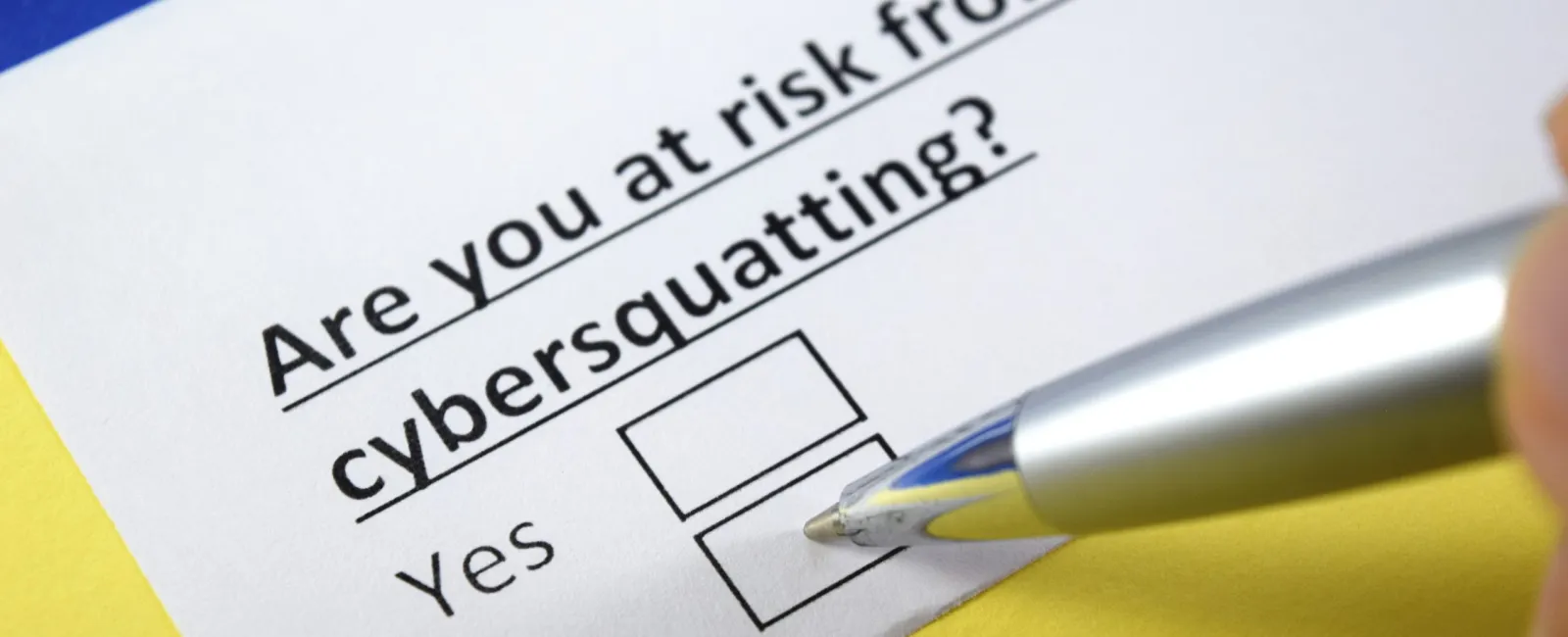November 21, 2023
Have you ever experienced clicking on a particular website address, perhaps in a post or an online ad, only to find yourself on an entirely different website than you expected? And when you look carefully, you find it’s due to a minor typo in the URL?
This deceptive tactic is known as cybersquatting, and it poses a significant threat not only to the online presence of businesses and individuals but also to the ever-evolving landscape of cybersecurity. What’s particularly unsettling is that you could fall victim to a cybersquatted domain without realizing it.
Here’s a comprehensive overview of this type of cybercrime:
Understanding Cybersquatting
Cybersquatting, also called domain squatting, involves the malicious act of registering a domain name that closely resembles that of a legitimate entity, whether it be a business, organization, or individual. The primary motivation behind this scheme is typically financial gain, as cybersquatters seek to exploit the recognition and success of well-established brands. However, the consequences extend beyond financial losses, as cybersquatting can tarnish the reputation of its victims.
Varieties of Cybersquatting
Numerous cybersquatting scams exist, but here are the most prevalent ones that demand your attention:
- Top-Level Domain (TLD) Exploitation: TLD represents the concluding segment of a domain name, such as “.com,”. “co.uk,” and “.org.” For smaller to medium-sized businesses, celebrities, or public figures, registering all possible TLD variations for their brand can be impractical. Cybercriminals take advantage of this by registering similar domains with various TLDs. They may create offensive or inappropriate websites, demanding payment from the original domain owner to take them down or use them to establish trust with visitors, making them susceptible to phishing attacks.
- Typosquatting: This form of cybersquatting involves deliberately registering domain names with common typographical errors, capitalizing on frequent typos made by users, and redirecting them to malicious websites.For instance, consider the domain “Facebook.com.” Here’s how a cybersquatter might acquire similar domains:
• “Faecbook.com”
• “Facebokk.com”
• “Faceboook.com”
Typos are easily made, leading to significant traffic on misspelled domains.
- Look-Alike Cybersquatting: In this variation, cybersquatters create domains by adding common words to deceive customers, even if the domains don’t seem confusingly similar at first glance.Here are a few examples:
• Original: Google.com / Lookalike: G00gle.com
• Original: Amazon.com / Lookalike: amaz0n.com or amazon1.com
• Original: Microsoft.com / Lookalike: Microsofty.com
While these may not seem likely to deceive users, they often still do.
How to Protect Against Cybersquatting
You can shield yourself from falling victim to cybersquatting through proactive measures. Here are some steps to consider:
- Register Your Trademark: Registering your trademark early can be advantageous to gain full protection under the Anti-Cybersquatting Consumer Protection Act (ACPA) and Uniform Domain Name Dispute Resolution Policy (UDRP). These regulations apply even if a cybercriminal registers a cybersquatting domain name, but having a registered trademark can simplify the process.
- Invest in Multiple Prominent TLDs: When securing your domain, consider registering it with the most popular TLDs, such as .co and .org.
- Exercise Caution While Browsing: Double-check that you’re navigating to the correct website when entering URLs into the address bar. This practice also applies to clicking on links. Hover over links with your mouse to verify their authenticity. For added security, manually type URLs into the search bar.
Cybersquatting represents just one of the tactics hackers employ to disrupt online activities. Cybercriminals continuously devise new methods to defraud both businesses and individuals. Our assistance is available to bolster your security measures and ensure protection against crafty attackers.
We offer a FREE, no-obligation Security Risk Assessment. During this assessment, we evaluate your network security solutions, pinpoint potential vulnerabilities, and collaborate with you to create a tailored action plan for safeguarding your digital assets. Schedule your free initial consultation with one of our senior advisors by calling us at 973-828-0488 or visiting www.ibsre.com.
